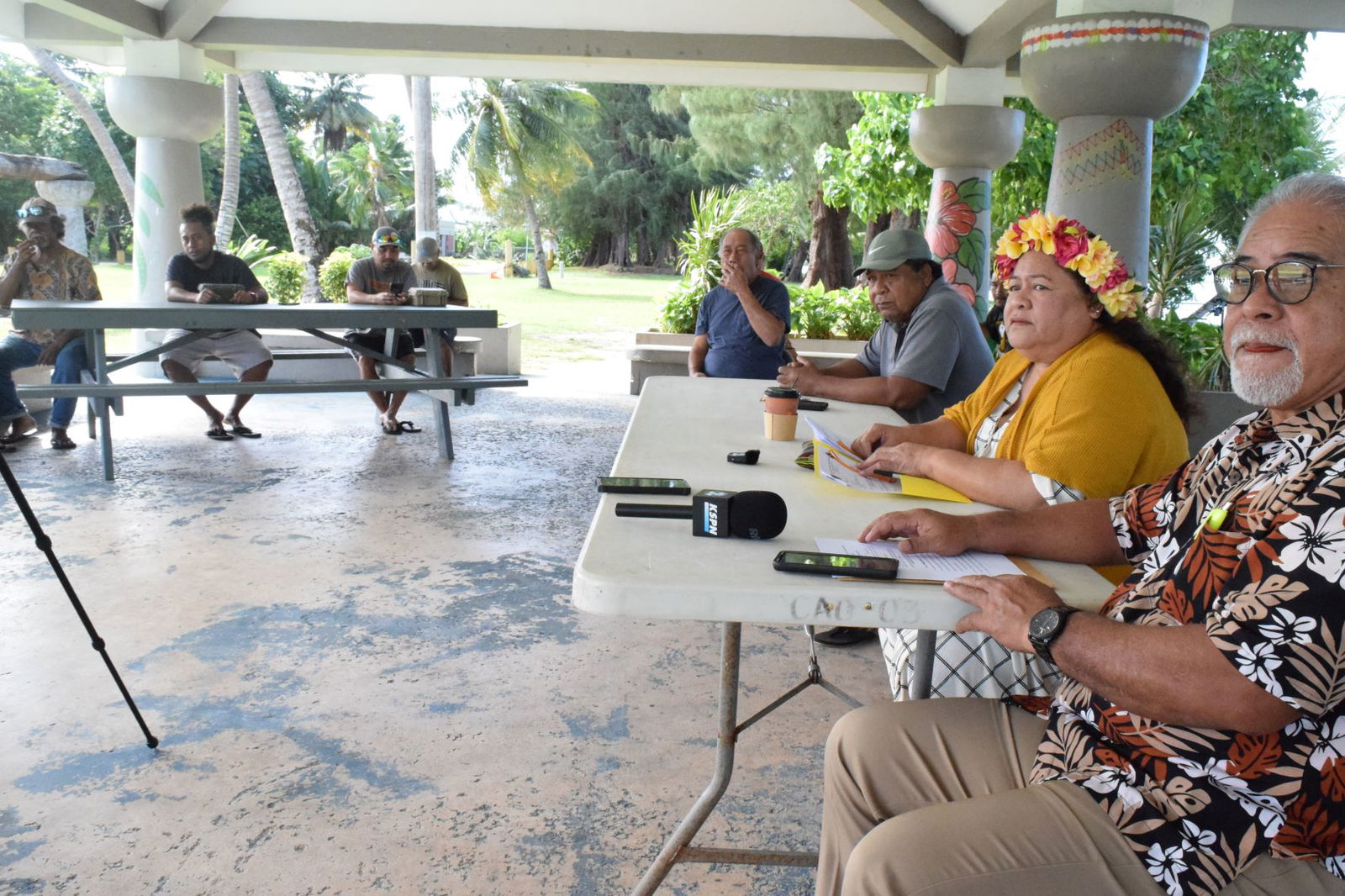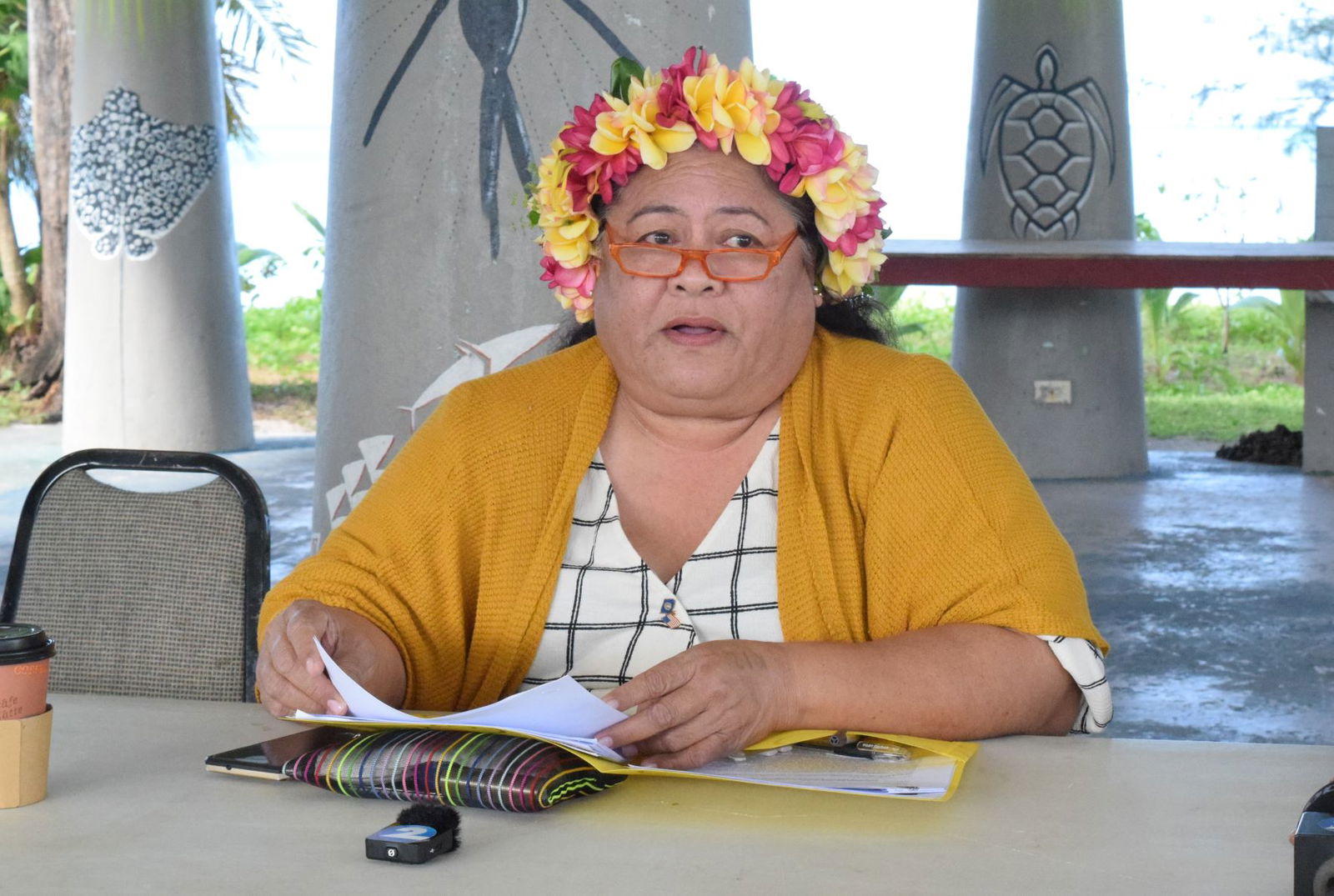A GROUP of local fishermen on Wednesday aired their support for “tekking” or gillnet fishing in the Saipan lagoon as they joined Rep. Denita Yangetmai in explaining to the public the intent of her House Bill 23-5, which they believe will help them and their families cope with the local economic downturn.
Also joining them was the governor’s special assistant for Carolinian affairs, Felix Nogis, who addressed the concerns raised by other members of the community regarding the traditional fishing method.
Louie Tilipao, a local fisherman, noted that fishermen on Rota and Tinian are allowed to practice dragnet, surrounding net, trap nets and other fishing methods in the waters surrounding their islands, but Saipan fishermen can only use talaya or throw net for subsistence fishing.
H.B. 23-5, which Yangetmai introduced on Friday, “will help bring food to our table,” said Tony Rasiang, another local fisherman who attended the press conference at the Carolinian Village pavilion in Garapan.
Nogis said gillnet fishing is part of their local traditions. It was banned in 2000 when Managaha, Bird Island and Forbidden Island were designated marine sanctuaries.
He said he can understand that gillnet was banned back then because there were no sanctuaries.
“But now that we have these sanctuaries in place I think we should [allow gillnet fishing] because people are in a dire situation right now,” he said.
“We want to make it clear. We are not against marine sanctuaries. It is good for us and we know it is good for fishermen, too,” he added.
He said the marine sanctuaries have enabled spawning and made possible the migration of fish throughout the lagoon.
Yangetmai said it has been over 20 years now since the sanctuaries were designated “so the fish population has grown and the fish are coming out of the protected areas…. It’s not that the fish are locked up in there. The fish are free to come out from the protected areas and into the Saipan lagoon,” she added.
Eco-friendly and sustainable
Nogis said gillnet fishing is eco-friendly and sustainable because H.B. 23-5 would allow only the size of mesh that is not less than 1.5 inch when stretched.
In addition, he said the bill would authorize the Department of Lands and Natural Resources to promulgate enforceable rules and regulations to provide for the safe and sustainable practice of gillnet fishing.
Nogis said, “It is in our interest as local fishermen to ensure sustainability and preservation of marine life population…. The sanctuaries enabled spawning and migration of fish throughout the lagoon,” he reiterated.
He said the proposal to allow gillnet fishing “was not an overnight thing.”
“This was years in the making. We have met with Rep. Yangetmai, and periodically, with her colleagues in the House. We have met with senators and most of our recommendations were included in the bill,” he said.
The 1.5-inch mesh of the gillnet will ensure that only adult fish are caught, he added.
He said the only thing they are asking for is subsistence fishing so families can catch and eat fish. “Given our economic situation, I think our leaders should step up and…give our people options on how they can survive these hard times,” he added.
Right now, Nogis said local fishermen on Saipan “can only do free-dive” or use talaya in the lagoon. With the free-dive method, he said the size of the catch depends on the individual fisherman. With a gillnet, Nogis said the size of the mesh will ensure that “the catch are adults, and mostly, those that were spawned.”
“So it’s eco-friendly as far as marine life is concerned,” he added.
Yangetmai said her bill specifically provides that the gillnet is “stationary in a specific area and retrieved without significant damage to the coral or other marine life.”
Nogis said gillnets are not set on corals or rocks. The gillnet stays in the water for a certain number of hours only and “does not rest there for the entire day or a week.” If the gillnet is set at 4 a.m., for example, a fisherman can retrieve it as soon as the sun rises, Nogis said.
He added that gillnet fishing activities will be limited to one portion of the Saipan lagoon at a time.
H.B. 23-5 would authorize DLNR to establish a northern zone from Paupau Beach in San Roque to the part of the lagoon facing Cabrera Commercial Center in Garapan where fishing will be permitted in the odd-numbered months of a calendar year.
DLNR would also establish a southern zone that may cover the portion of the lagoon facing Cabrera Commercial Center all the way to Pakpak Beach Park in San Antonio where fishing will be permitted in the even-numbered months of the calendar year.
The measure, which was referred to the House Committee on Natural Resources, would allow gillnet fishing for non-commercial or family use only.

Rep. Denita Yangetmai, second right, and Felix Nogis, special assistant for Carolinian affairs, right, with local fishermen led by Louie Tilipao, third right, during a press conference at the Carolinian Village pavilion in Garapan on Wednesday.

Rep. Denita Yangetmai talks about House Bill 23-5 which she introduced on Friday.











